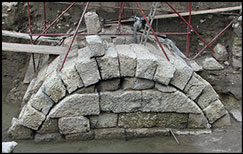No CrossRef data available.
Article contents
A barrel-vaulted reservoir at Kale-Krševica: hydraulic technology and Iron Age ‘Hellenisation’ in Serbia
Published online by Cambridge University Press: 18 February 2019
Abstract

Narratives of transformation in Iron Age societies on the periphery of the Greek world have positioned colonial powers as agents of change. Archaeological sites exhibiting apparent Greek or Macedonian evidence are often taken to exemplify Hellenisation, whereby ‘barbarians’ adopted ‘more advanced’ Greek practices. Such narratives, however, are imbued with assumptions of cultural superiority, failing to elucidate the complexity of past social interactions and how these manifest in the archaeological record. The barrel-vaulted reservoir at the site of Kale-Krševica in Serbia reveals that the simplistic framework of Hellenisation is insufficient to explain the construction of this unique hydraulic installation.
- Type
- Research
- Information
- Copyright
- Copyright © Antiquity Publications Ltd, 2019




